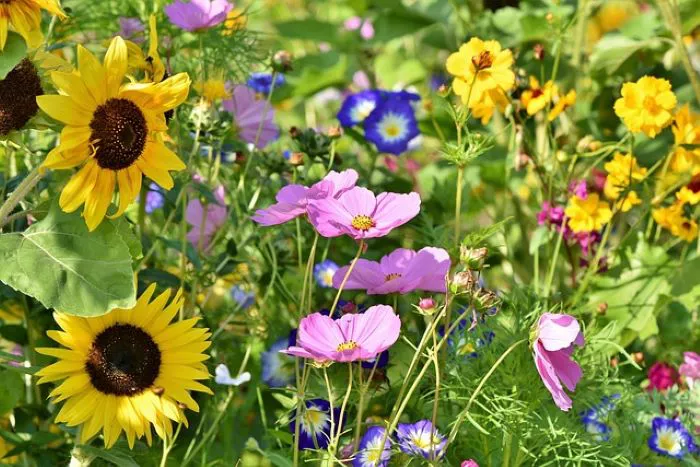Wildflowers are a beautiful addition to any garden or landscape. They attract pollinators, enhance biodiversity, and provide vibrant colors throughout the growing season. If you are considering planting wildflower seeds, understanding the germination process is essential. This article will explain how long it typically takes for wildflower seeds to sprout, the factors that influence germination, and tips for successful planting.
Understanding Wildflower Seeds
Wildflower seeds come from a variety of plants native to different regions. Each species has its own germination requirements and timelines. Generally, wildflower seeds can be categorized into two types: annuals and perennials.
Annual wildflowers complete their life cycle in one growing season. They germinate, bloom, set seeds, and die within a year. Common examples include California poppy and zinnia. Perennial wildflowers, on the other hand, can live for several years. They may take longer to germinate and establish roots before blooming. Examples include coneflower and black-eyed Susan.
Typical Germination Times
The time it takes for wildflower seeds to sprout varies widely depending on several factors.
Germination Range: On average, most wildflower seeds will germinate within 7 to 30 days after planting. Some seeds may sprout in as little as a week, while others may take several weeks. For example, poppies often germinate within 10 to 14 days, while perennial species like asters may take 21 to 30 days.
Temperature Effects: Soil temperature plays a significant role in seed germination. Most wildflower seeds prefer warm soil temperatures between 65°F and 75°F (18°C to 24°C). If the soil is too cold, germination may be delayed. Conversely, excessively high temperatures can also hinder sprouting.
Moisture Levels: Adequate moisture is crucial for seed germination. Wildflower seeds need consistent moisture in the soil to absorb water and swell. If the soil is too dry, germination may be slow or may not occur at all. Conversely, overly wet conditions can lead to rot and seed death.
Factors Influencing Germination
Several factors can influence how long it takes for wildflower seeds to sprout.
Seed Dormancy: Some wildflower seeds have natural dormancy mechanisms that prevent them from germinating immediately. This dormancy can be broken by specific environmental conditions such as cold temperatures or scarification. Cold stratification is a process where seeds are exposed to cold, moist conditions for a period. This mimics winter conditions and encourages germination when warmer temperatures return.
Soil Quality: The quality of the soil also affects germination. Well-draining soil with good organic matter promotes healthy seedling growth. Soil that is compacted or lacks nutrients can delay germination and hinder seedling development.
Seed Preparation: Proper seed preparation can enhance germination rates. Some wildflower seeds benefit from scarification, which involves scratching or nicking the seed coat to allow moisture to penetrate. This is particularly useful for seeds with hard outer shells.
Light Requirements: Some wildflower seeds require light to germinate. These seeds should not be buried too deeply in the soil. Instead, they should be lightly pressed into the soil surface or scattered on top. Others may need darkness and should be planted deeper.
Tips for Successful Wildflower Planting
To ensure successful germination of wildflower seeds, follow these tips.
Choose the Right Time: The best time to plant wildflower seeds is in the spring or fall. Spring planting allows seeds to germinate as temperatures rise. Fall planting can benefit from natural cold stratification, especially for perennial species.
Prepare the Site: Before planting, prepare the site by removing weeds, rocks, and debris. Loosen the soil to improve drainage and aeration. This helps create a hospitable environment for the seeds.
Follow Planting Instructions: Always follow the specific planting instructions provided with your wildflower seeds. Different species may have unique requirements for depth, spacing, and light exposure.
Watering: After planting, water the area gently to moisten the soil. Keep the soil consistently moist but not soggy until the seeds germinate. Once seedlings emerge, you can reduce watering frequency.
Patience is Key: Germination times can vary, so be patient. Monitor the soil moisture and conditions but avoid digging or disturbing the seeds.
Conclusion
Understanding how long wildflower seeds take to sprout is essential for successful planting. On average, wildflower seeds germinate within 7 to 30 days, depending on the species and environmental conditions. Factors such as temperature, moisture, soil quality, and seed dormancy influence germination times. By following proper planting techniques and being patient, you can enjoy the vibrant beauty of wildflowers in your garden. With the right care, your wildflower garden will thrive, attracting pollinators and enhancing the natural beauty of your landscape.


